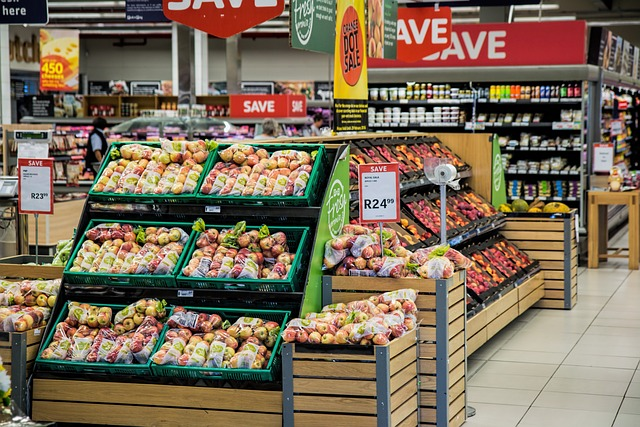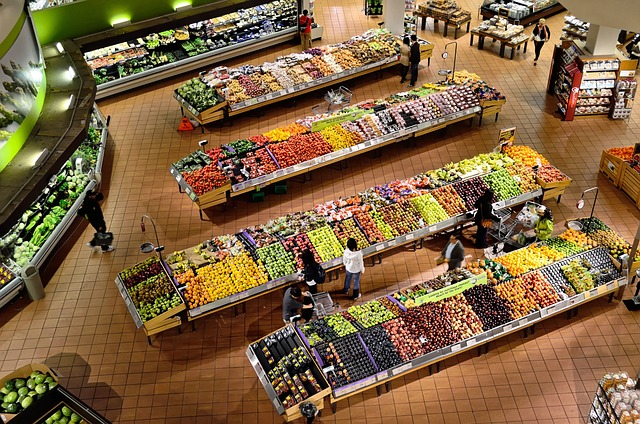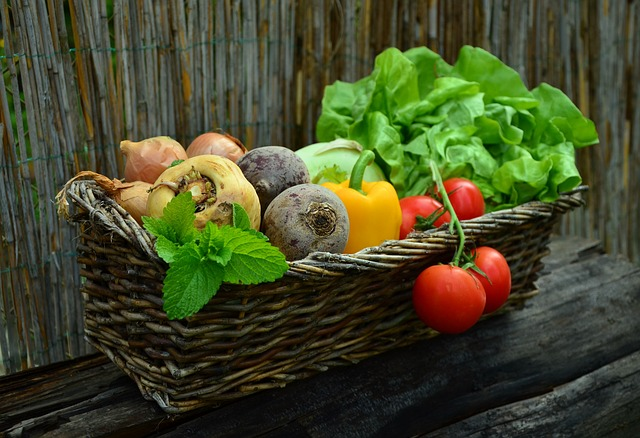Making Healthy Food Choices: A Guide for Everyone
This comprehensive guide to making healthy food choices will lead each individual on the path of health and wellbeing. It covers topics such as popular diets, nutrition essentials, balanced meals and snacks, reading food labels, healthy eating out, understanding food cravings, ingredients to avoid for more sustainable health, tips for faster metabolism, food additives and preservatives to watch out for, managing calorie intake, meal preparation and organization, supplements, fortifying foods, sorting good bacteria from bad bacteria, mindful eating, and much more.
With this guide, it’s easier than ever before to make smart, healthier decisions when it comes to food and their corresponding lifestyle choices.
Understanding Food Choices
Making healthy food choices is a crucial part of living a healthy lifestyle. Our food decisions are influenced by both internal and external factors, such as taste, cost and availability. Research has shown that the food environment can have an effect on our eating habits – particularly for older adults who may struggle to make healthier choices due to changing tastes and environments.
But there’s good news! Making smart food selections can bring multiple benefits like improved physical and mental health. Eating nutrient-dense foods will provide essential vitamins and minerals necessary for optimal wellbeing, while opting for organic products ensures we get all the nutrients our body needs. So let’s start making those healthy food choices today!
Nutrients and Calories
Different types of foods are like a treasure chest of nutrients and calories. Fruits and vegetables are like jewels, packed with vitamins and minerals while being low in calories. Whole grains such as oats, brown rice, and wild rice are like gold coins – high in fiber and vitamins but low in fat and calories. Protein sources such as chicken, turkey, eggs, and yogurt can be likened to silver bars – also low in fat and calories. Additionally, nuts, seeds, and fish such as salmon or tuna can be compared to diamonds – they’re high in protein plus omega-3 fatty acids that have many health benefits.
Almonds, walnuts or cashews are all rich with healthy fats plus fiber for metabolic health if eaten moderately. Onions too offer bioactive compounds which have positive effects on your wellbeing. Different types of food truly provide a wealth of nutrition!
Types of Foods
The five food groups – fruits, vegetables, grains, proteins and dairy – are essential for our health. But what makes them so nutrient-dense? Apples are like little orbs of vitamins; oranges a burst of antioxidants; bananas a bundle of vitamin B6. Veggies such as bell peppers, broccoli, cauliflower and spinach offer an array of minerals while being low in calories.
What other sources can provide us with protein and vitamins? Whole grains like oats and brown rice contain fiber and vitamins while being low in fat. Protein sources such as chicken, turkey eggs or yogurt also have low fat content. Nuts, seeds and fish like salmon or tuna are high in protein plus omega-3 fatty acids. Tubers like potatoes sweet potatoes or squash keep us full for longer periods too!
But how does making healthy food choices lead to improved physical and mental health? Understanding the nutrients found in different types of foods helps us make informed decisions about what we eat. Eating a variety of nutrient-dense foods ensures that we get all the essential vitamins and minerals our body needs while consuming lower fat/calorie foods keeps us at a healthy weight!
Factors Influencing Food Choices
When it comes to making healthy food choices, taste, cost, and availability are all key factors which can shape and frame the decisions we make. Our food environment, or the food choices we have readily available to us, can play a large role in influencing our decisions.
Research has shown that overweight and obese individuals are more likely to consume less healthy food options due to their lower cost and greater availability compared to healthy food options. Sustainable healthy diets that promote healthy eating require a combination of individual, social, and environmental factors to influence food choice.
Taste
The chemical senses of taste and smell play a key role in our food preferences and aversions. A food’s taste and smell can be a major factor in determining whether we will choose to eat it or not. Taste preferences vary from person to person, with some preferring salty and savory flavors while others may prefer sweet and sour flavors.
Texture too can be a major factor in food choice, with smooth, creamy textures being preferred by some, while others may prefer crunchy or chewy textures. The combination of these elements can be used to create highly palatable foods that are designed to appeal to our senses and encourage consumption.
For example, the combination of crunchy texture and sweet taste is often used in processed foods to make them more appealing.
Cost
Cost can be a major factor in what food we buy and how much. Do you ever find yourself buying cheaper, less nutritious food when on a budget? Or avoiding certain foods altogether due to their cost?
The price of food can also affect the amount we purchase. We often buy more when it’s cheaper – even if we know it won’t all be eaten. But ethical concerns about production can also influence cost; people may be willing to pay extra for ethically sourced or produced items.
Availability
Availability of food – what influences our choices? Taste, cost, and availability are just some of the many factors that shape our food decisions. We tend to eat whatever is available to us; if healthier options aren’t there, we’re more likely to go for less healthy snacks. Accessibility can be affected by physical elements like access to stores or markets, as well as cultural and economic variables such as food production and transportation. Food deserts – areas with no grocery stores or markets – can also limit access to healthy foods in certain places.
Culture, economics, psychology… all these components play a role in influencing our food preferences and intake. Our culture shapes how we view food; psychological aspects like taste, aroma, texture affect what we choose; labels on products and marketing strategies have an impact too!
So how do you make healthier choices while still honoring traditions? It’s important to consider all the factors when making your decision: taste yes, but also culture & economics & psychology! With this knowledge, you can make informed decisions that respect your values while keeping your health in mind.
Making Healthy Food Choices
Making healthy food choices is a must for living a healthy life. Eating right can bring about numerous advantages, from preventing and managing chronic diseases such as heart disease, diabetes, and cancer to improving physical and mental health. It also helps reduce the risk of becoming overweight or obese while protecting the environment by promoting sustainable diets.
So what should you choose? Fruits and vegetables, whole grains like quinoa, brown rice, oats instead of white bread or white rice; lean proteins like fish, poultry or beans over fatty cuts of meat; low-fat dairy products such as milk yogurt or cheese; plus healthy fats found in nuts avocados and olive oil – these are all essential components of a balanced diet.
It’s not just about what we eat though – our food environments play an important role too! Studies show that having easy access to fast-food restaurants and convenience stores leads to unhealthy eating habits whereas supermarkets encourage healthier options. And don’t forget societal level interventions like food labeling which can help us make better decisions when it comes to food choice behavior.
Eating Regularly
Eating regularly is a must for any healthy diet. But why? Well, regular meals can help you get the energy and nutrients your body needs throughout the day – plus, it’ll reduce cravings for junk food! Studies even suggest that eating regularly can improve weight management in the long run and lower your risk of developing chronic health conditions like heart disease.
So what should you do? Make sure to eat breakfast every single day – it’s essential for giving you an energized start to your day. And don’t forget lunch and dinner too! When snacking, opt for healthier options such as fruits, veggies, or whole grains.
Not only is eating regularly good for your body, but also great for our planet! Eating regular meals helps ensure that we’re getting enough of those essential nutrients while reducing waste from food production – so everyone wins!
Planning Ahead
Planning ahead when it comes to food choices is a must if you want to make the healthiest decisions. But why plan ahead? Well, not only does it reduce stress and save time and money, but it also helps you choose the most nutritious foods!
When planning meals, consider all five food groups: fruits and veggies, whole grains, lean proteins, dairy products and healthy fats. Plus, go organic whenever possible; this will help minimize your exposure to toxins and pollutants.
Finally, think about how much time you have for cooking AND cleaning up afterwards. Planning ahead can help cut down on both of these tasks so that you can free up more time for other activities!
Eating a Variety of Foods
Eating a variety of foods is essential for a healthy diet – it’s like giving your body the nutrients it needs to thrive. But when selecting what to eat, you must consider not only nutrition, but also cost and availability. Fruits and veggies are an excellent way to add flavor and variety; think apples, oranges, bananas, potatoes, carrots and peppers! Whole grains such as quinoa, brown rice or oats can also be tasty additions. Lean proteins like fish or poultry plus healthy fats from nuts, avocados or olive oil should round out your meals.
But there are more than just physical benefits associated with eating a variety of foods – improved mental health and emotional responses are just some of the perks! Eating diversely can even reduce your risk of developing chronic conditions like heart disease while promoting healthier dietary patterns that help minimize waste in food production. So don’t forget: Variety is key for a balanced diet!
Summary
Making Healthy Food Choices: A Guide for Everyone presents informative discussion on the components influencing food choices and how to navigate those barriers. Eating regular, nutrient-dense meals can help improve physical and mental health.
Personal preferences, cost, availability and environmental factors all significantly contribute to one’s choice of food, making it important for one to properly consider these factors when making selections. Planning ahead for meal times can benefit individual wellbeing as well as save both time and money in the long run.
Additionally, incorporating a variety of foods from the five public health nutrition groups is also essential for an overall balanced diet. Through proper understanding of the variables impacting healthy food choices, everyone can make informed decisions that are beneficial to their life journey.
Frequently Asked Questions
What do you mean by food choice?
Food choice refers to the decisions we make every day when selecting and consuming food and drinks. Making healthy decisions both nutritionally and ethically can lead to a better life overall.
What are some food choices?
By following the most common advice, a nutritious diet can be made up of diverse food choices like fruits, vegetables, whole grains, fat-free or low-fat milk and milk products, and various protein foods.
With these options, you can make healthy eating a priority in your daily habits.
What are the three categories of food choice?
Making healthy food choices can be difficult, but understanding the three primary categories that influence our dietary selections can help simplify the process. These categories consist of food-related features, individual differences and society-related features.
With this knowledge, individuals can make more informed decisions about their diets and strive for healthier eating habits.
What is the theory of food choice?
The theory of food choice attempts to explain our dietary habits by looking at the psychological and environmental factors that influence our food choices. This includes mood, social environments, physical activities, and an individual’s experiences with a particular type of food.
Ultimately, these factors determine the drive for or aversion to certain foods.
What is the selection of food?
The selection of food needs to be carefully considered to ensure quality and satisfaction for customers. Thoughtful planning and decision-making are paramount when choosing what dishes to include on the menu, in order to provide a memorable culinary experience.










